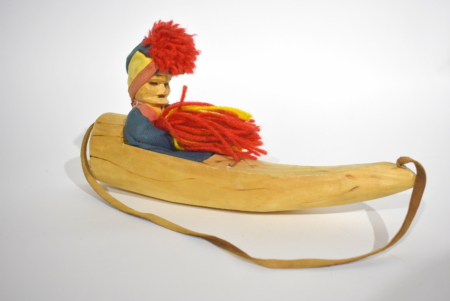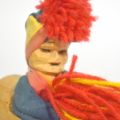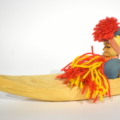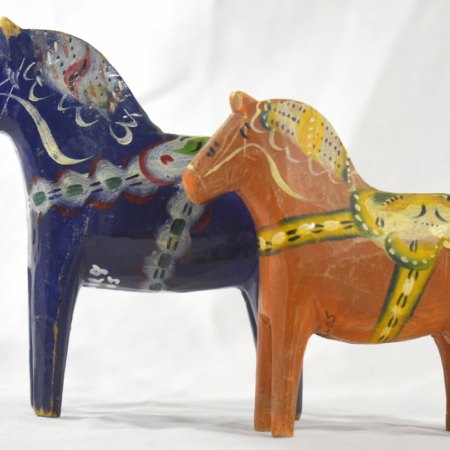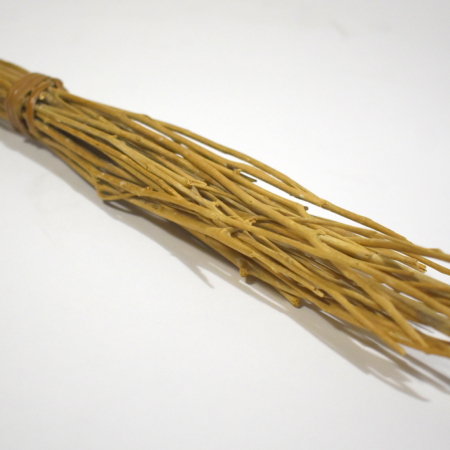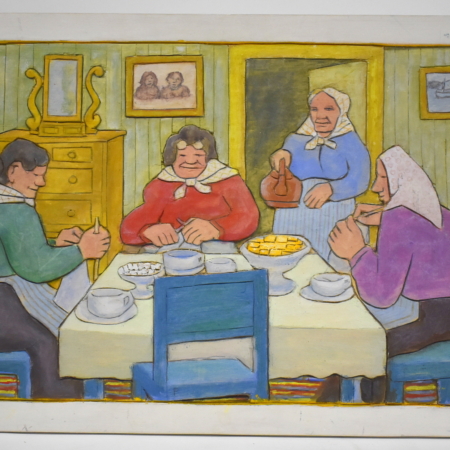Sámi Toy – Hand-Carved Wooden Ackja
This toy hand-carved wooden Ackja (a sled pulled by reindeer used as a draft animal) was made by the Sámi (descendants of Indigenous nomadic peoples who had inhabited the Scandinavian Arctic Circle for thousands of years).
The reindeer sled is used for storage and transportation of goods. In this Ackja, there is a Sámi man who has a hand-carved wooden face and is wearing a colorful, traditional outfit called a gákti.
Notice the garment is made in the traditional colors of the Sámi flag (red, yellow, green, and blue) and the traditional Sámi folk hat has a large red pompom (the pompoms are on the hats of both children and adults).
The colors, patterns, and jewelry of the gákti indicate where a person is from, if a person is married or single, and sometimes can even be specific to their family. The collar, sleeves and hem usually have appliqués in the form of geometric shapes. Some regions have ribbonwork, others have tin embroidery, and some Eastern Sámi have beading on their collars or clothing. Hats – made from wool, leather, or fur – vary by gender, region, and season.
Traditionally, the Sámi have pursued a variety of livelihoods, including coastal fishing, sheep herding, and fur trapping. Their best-known means of livelihood is semi-nomadic reindeer herding.

